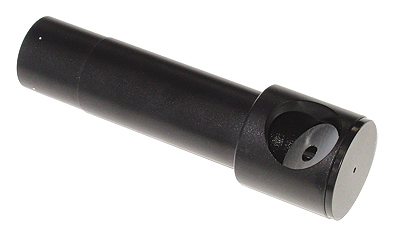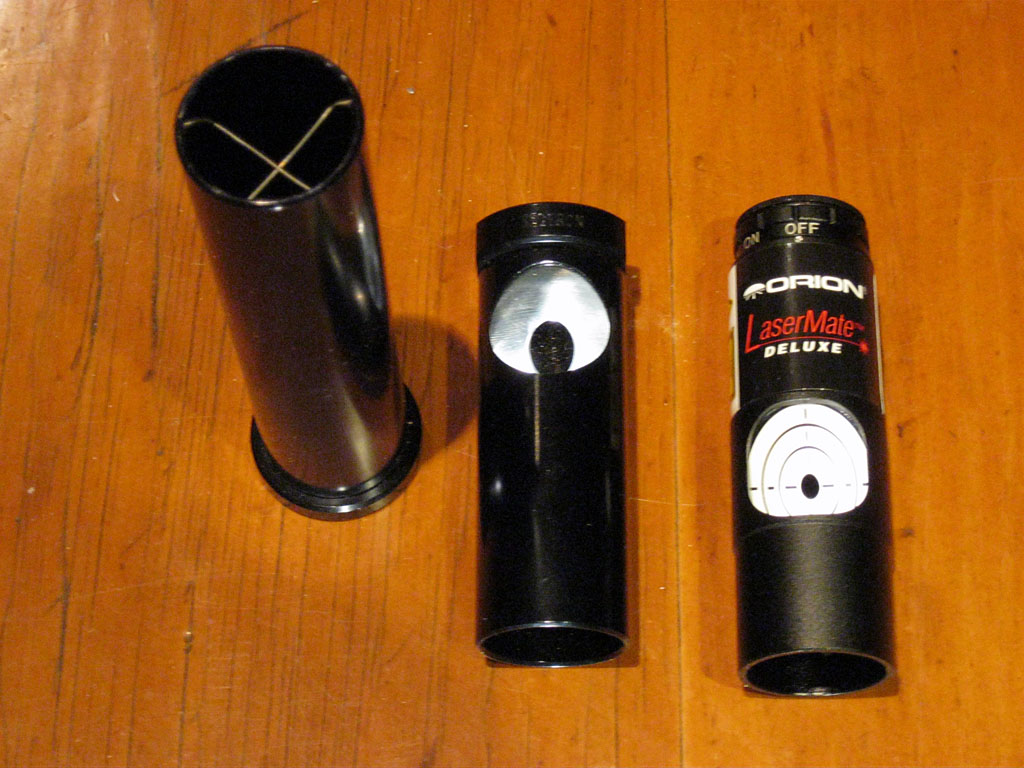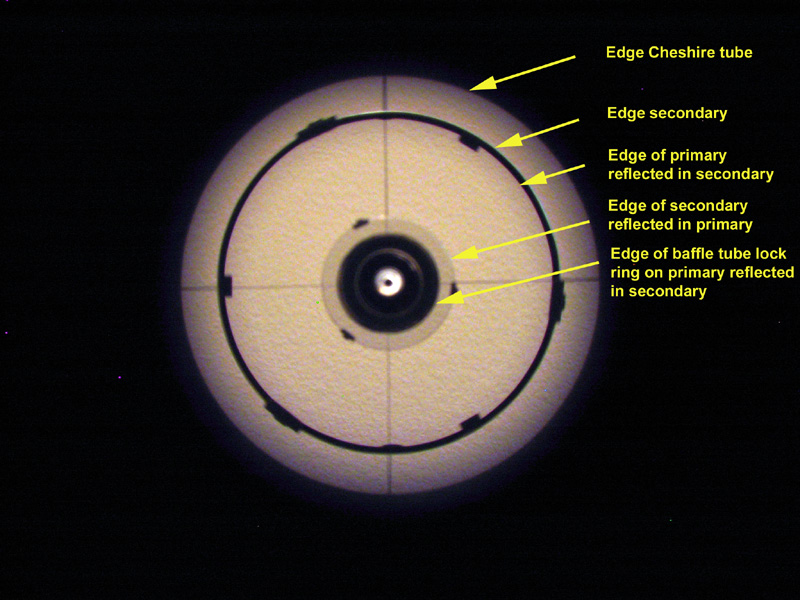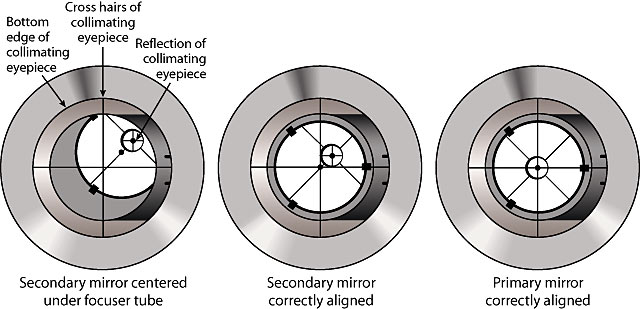Cheshire eyepiece
A Cheshire eyepiece is a tool for alignment of the optical axes of the mirrors or lenses in a telescope. With a Cheshire eyepiece can use it to check the collimation of the optical elements of a telescope.
Design and function
A Cheshire eyepiece that contains no mirrors or lenses themselves, can be used both refractors and reflectors to as a Newtonian telescope or catadioptric devices such as a Maksutov -Newton telescope. For this purpose, it is used instead of an optical eyepiece in the focuser. A light and of 45 degrees in angle in the mounted surface eyepiece directs the light through a side opening in the eye-piece, and thus the telescope.
Due to the optical path of the light on the mirror or lens of the telescope is formed, a corresponding mapping, which can be viewed through a viewing opening at the rear end of Cheshire eyepiece. Shape and position of various elements of the image, including a crosshair with most modern Cheshire eyepieces, enable an assessment of the optical collimation. Identified errors or deviations can be corrected usually by an adjustment of the telescope.
The construction of the Cheshire eyepiece goes back to the English physicist Frederick James Cheshire, in 1921, an article in the journal " Transactions of the Optical Society " published.









